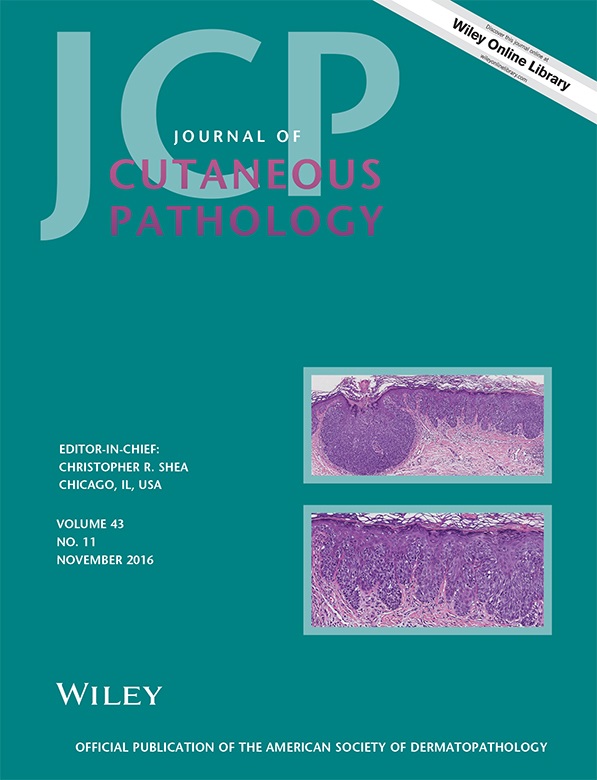Lichen striatus with syringotropism and hyperplasia of eccrine gland cells: a rare phenomenon that should not be confused with syringotropic mycosis fungoides
Abstract
Background
Syringotropism is characterized by lymphocyte infiltration in the eccrine gland and is usually associated with various degrees of hyperplasia of eccrine gland cells. This phenomenon has been reported in rare cases of mycosis fungoides, which are also called as syringotropic mycosis fungoides.
Methods
We studied seven cases of lichen striatus associated with syringotropism and hyperplasia of eccrine gland cells, diagnosed at our dermatology department in the past 5 years. The hematoxylin and eosin-stained slides from these cases were analyzed, and immunohistochemical and T-cell receptor gene rearrangement studies were performed.
Results
Of the seven cases, two showed prominent and five showed subtle syringotropism and hyperplasia of eccrine gland cells. Immunohistochemical study showed mixed infiltration by T-cells and B-cells around the eccrine glands. The T-cells were composed of CD4 and CD8-positive cells. T-cell receptor gene rearrangement study showed negative results in all the cases.
Conclusion
Syringotropism and hyperplasia of eccrine gland cells is a rare phenomenon in lichen striatus. Dermatopathologists should be aware of this to avoid misdiagnosis as syringotropic mycosis fungoides.




